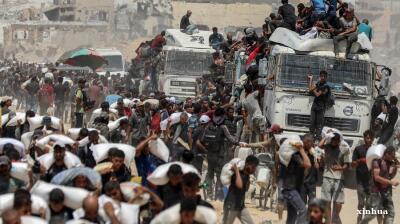The declaration of force majeure at Libya’s Zawiya Refinery by Libya’s National Oil Corporation (NOC) on December 15 has put plans to boost crude production in doubt and raised concerns over the North African country’s ability to meet its oil export commitments.
The force majeure is a legal clause that allows companies to suspend contractual obligations due to unexpected events beyond operators' control. A force majeure was last declared following the fall of Gaddafi’s regime in 2011, and previously the consequences were a heavy blow to the country’s economy.
In September this year, a force majeure was declared at key field El-Feel as the country struggled with a production blockage crisis triggered by a power struggle to control the central bank. A month before that, a force majeure was declared at the main Sharara field due to a shutdown caused by the political standoff between the Government of National Unity (GNU) and eastern Libyan authorities over the central bank's leadership crisis.
The NOC said on December 15 that the newest force majeure was driven by severe damage caused by armed clashes near the facility. The clashes involved light and medium weapons, leading to fires and significant damage to the refinery’s storage tanks.
Fires and gas leaks have created a dangerous situation for workers and nearby residents. The NOC said its security and safety teams are unable to control the situation and called for urgent intervention to protect the facility.
The NOC urged authorities to halt clashes and ensure that oil facilities are excluded from conflict zones, emphasising the unpredictable risks posed to both the environment and public safety.
The clashes came at a time when Libya’s crude production was witnessing a significant recovery. Western oil companies were keen to start drilling tasks. Italy’s Eni and Britain’s BP resumed operations marking the end of an onshore drilling pause since 2014. Spain's Repsol was also preparing to resume operations in the Murzuq Basin, while Austria's OMV announced plans to start drilling in the Sirte Basin within weeks. The entire oil industry was having some positive vibes.
Last month, the country’s oil production surged to 1.363mn barrels per day (bpd), its highest level since 2013. By the end of this year, the aim is to reach a production level of 1.4mn bpd. If clashes widened and oilfields were forced to shut down, it is not expected that the country will achieve this target. Moreover, the short-term plan to resume production at four fields (Al-Dhahra, Al-Bahi, Al-Mabrouk, and Al-Tahara) to add over 40,000 bpd to the country’s production capacity will also be doubtful.
Home to Africa’s second-largest oil and gas reserves, Libya initially planned its auction for 2024, but political instability and a central bank crisis have postponed it to January next year as an initial date. Libya’s low extraction costs and strategic location make it attractive to major international oil companies, including Eni, BP, and TotalEnergies, but political instability has always hindered oil growth plans. In addition, oil infrastructure remains highly vulnerable to damage from political and militia-related violence.
Libya remains divided between two rival administrations: the eastern-based government backed by the HoR, and the western-based government in Tripoli, supported by the Presidential Council. The political divide has led to ongoing struggles over legitimacy, frequent clashes, and competition for control over critical resources, including oil.
News

Serbia holds emergency talks on fate of Gazprom-owned NIS
Serbia’s government held an emergency session to decide whether to nationalise oil company NIS after the US rejected a request to extend the firm’s operating licence and demanded a full exit of its Russian owners.

Epstein asked Trump’s ambassador to Ankara to “make me smile” with “photos of you and child”
Revelations in affair have also raised claims that many minors the late child sex offender targeted came from Turkey.

North Korea halves shell supply to Russia as stockpiles run low, says Ukraine
North Korea has significantly reduced its shipments of artillery shells to Russia in 2025, as domestic stockpiles show signs of exhaustion, and the quality of munitions deteriorates.

US strikes tariff relief deals with four Trump-allied Latin American nations
Washington will axe duties on selected imports from Argentina, Ecuador, Guatemala and El Salvador as part of framework trade agreements announced on November 13, in a move the Trump administration said would help reduce consumer prices.




